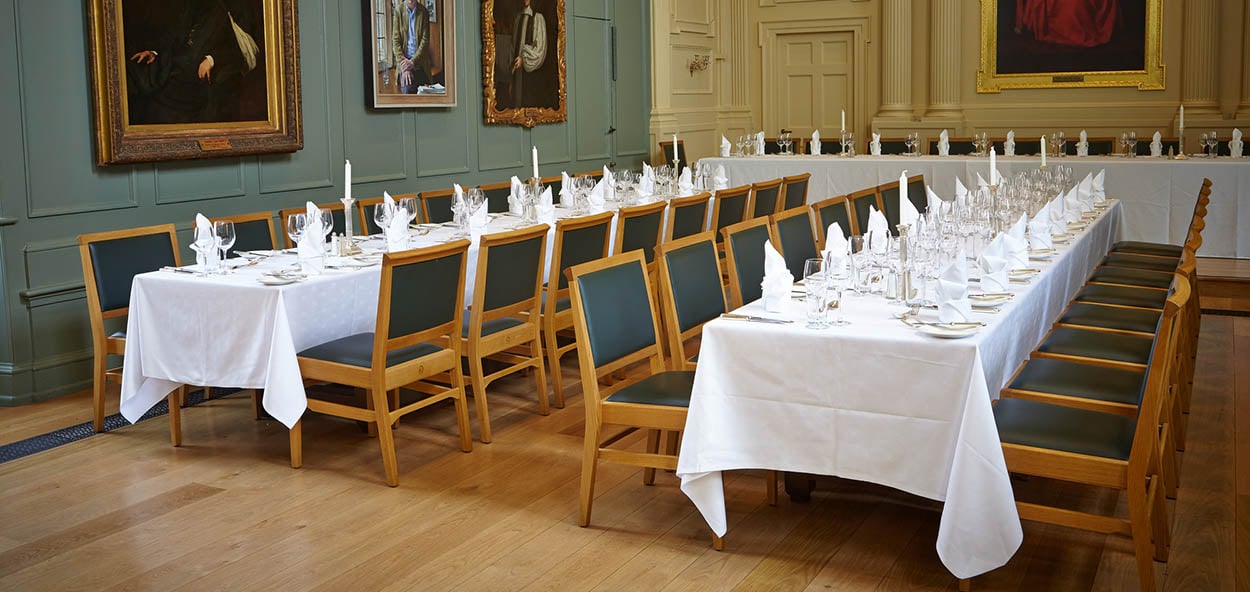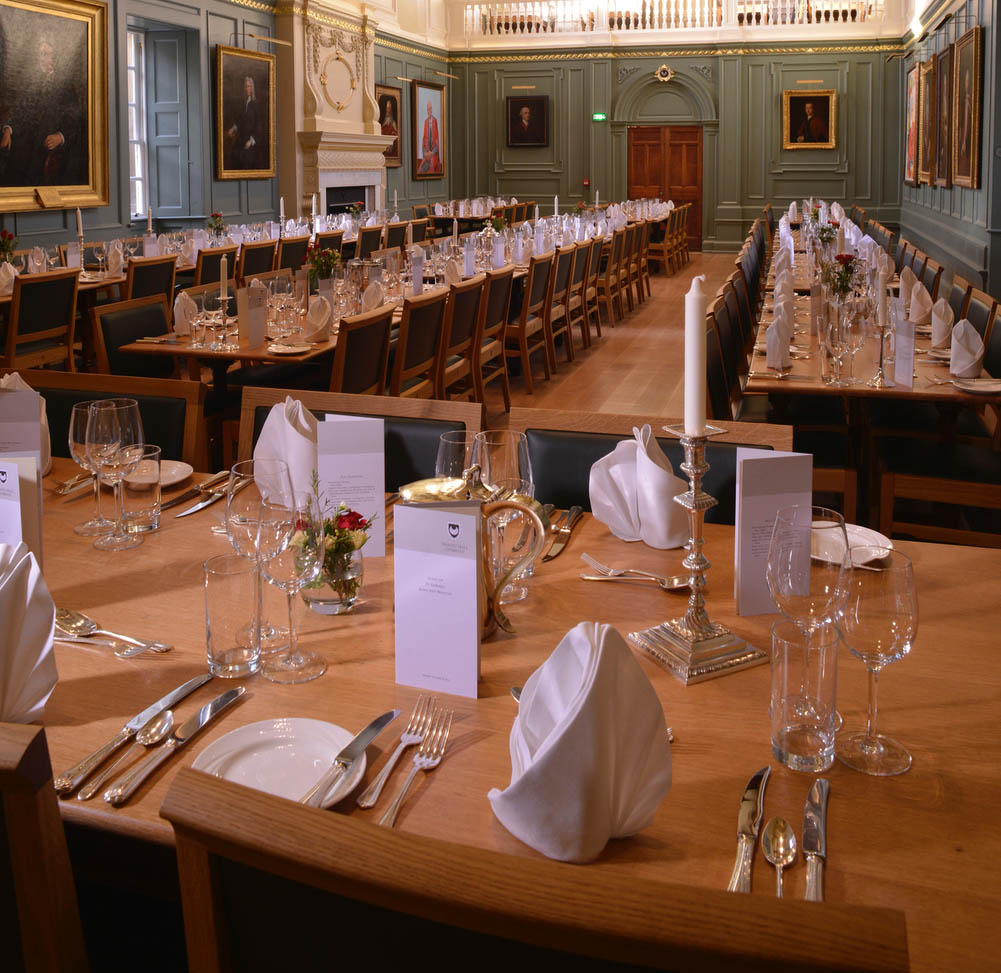In 2015, Luke Hughes was commissioned by Trinity Hall, Cambridge to redesign the Dining Hall furniture as part of a general refurbishment project. Amongst the challenges of the refurbishment was retaining the intimate feel of the space whilst making it much easier for the catering team to move the furniture around. Flexible furniture would allow the room to be set out for formal and informal dining, music performances and lectures, or cleared away altogether for buffet functions. The greatest challenge was to increase the seating capacity from 96 to 140 (46%) in the Dining Hall and a further 16 in the gallery, without cluttering the space, whilst using the flexible furniture.
This was the first major renovation of the Dining Hall in a century and was designed to see the College through for another century or more. With the site dating to the early 14th century, the College forebearers had built it to last. However, it was clear the old dining benches had had their day. Although viewed with affection by some, they were felt to be no longer suitable for modern expectations of dining in comfort. One of the great advantages of having selected high quality materials is that they can almost always be restored and revived. The dining tables, with good turned oak legs, had endured a century of abuse from students, staff, and the maintenance team. Well meaning steel straps screwed to the underside of the tops had prevented the normal rhythm of expansion and contraction between winter and summer, leading to bad cracks. Nevertheless, most of the oak was of high quality and perfectly seasoned.
For more information:

Enjoy the article? Delve deeper into Luke Hughes & Company’s place in the Arts and Crafts tradition with the fascinating new book 'Furniture in Architecture' . Available through Thames & Hudson




